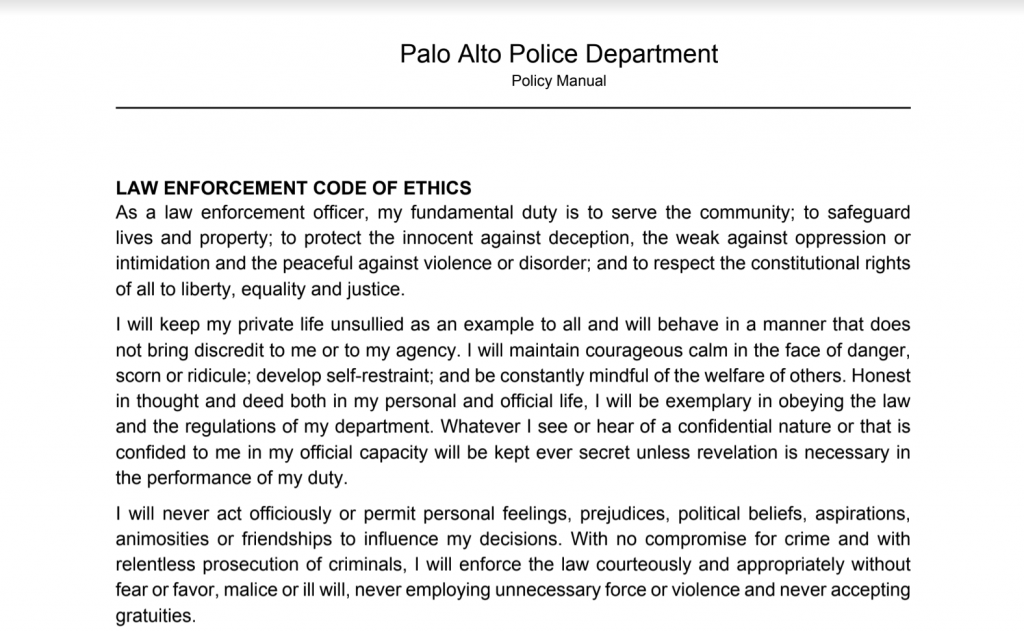When former Judge LaDoris Cordell visited the Palo Alto High School Social Justice Pathway students this November, many were transfixed by her vibrant skits of different situations involving civilians and police officers. At one point, she invited english teacher Erin Angell to the stage and, after whispering in her ear what to do, pretended to interrogate her about her marijuana usage. Cordell used situations such as these to explain to students how important yet uncommon it is that residents know how to interact with local police and what rights they do and do not have when doing so. This, she said, is largely due to the unusually high number of police departments in the United States of America. It is far more common for countries to have a single central police department that operates as a unit. However, the Bureau of Justice Statistics reports over 12,000 local U.S. police departments operating in 2016.
Each of these police departments has some form of a duty manual — a booklet containing rules about the expected police and civilian conduct during different situations. Although they are referred to only in local situations, they are often written by outside companies.
The truth is, she said, civilians are rarely aware of the existence of these books. Although the local Palo Alto Police Department does link to their official policy manual on their website, it is over 600 pages long and often uses complex legal language.
The publishing of duty manuals started not long ago when Cordell became the Independent Police Auditor of the San Jose Police Department in 2010. Pushing for transparency, she encouraged them to release their duty manual online. Since then, other departments in the U.S. have been doing the same.
The following is a break down of both the Palo Alto Police Department Policy Manual and duty manuals in general. Through interviews with PAPD Lieutenant James Reifschneider and Independent Police Auditor Stephen Connolly common questions about these unfamiliar booklets are answered.
What purpose does the PAPD duty manual serve?
Reifschneider:
Audio PlayerWhen and how is the manual updated?
Reifschneider:
Audio PlayerHow are police duty manuals in general created?
Connolly:
Audio PlayerWhen police departments are creating a duty manual, they often get help from outside companies such as Lexipol. How did PAPD create theirs?
Reifschneider:
Audio PlayerThe PAPD duty manual was only recently published online. Is the department working to make the manual more accessible to the public?
Reifschneider:
Audio PlayerThe manual itself is over 600 pages and contains complex legal language. Who would you say the intended audience of the manual includes? Do you believe it is necessary or important for citizens to be consuming and understanding the manual?
Reifschneider:
Audio PlayerBased on your experience with PAPD and other police departments, do officers generally follow the protocol outlined in their department’s duty manual?
Connolly:
Audio PlayerHow accessible do you perceive duty manuals to be to the public?
Connolly:
Audio PlayerHow could police departments make their duty manuals more accessible to the public?
Connolly:
Audio PlayerWhy are duty manuals so valuable?
Connolly:
Audio Player




